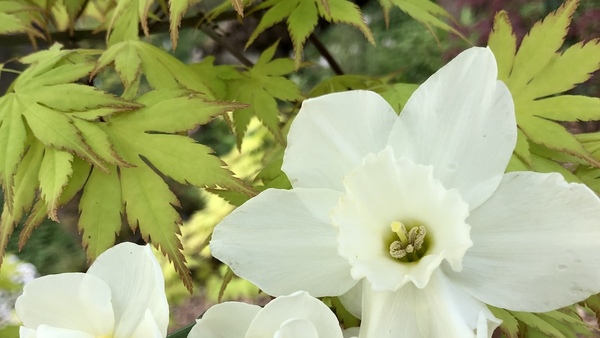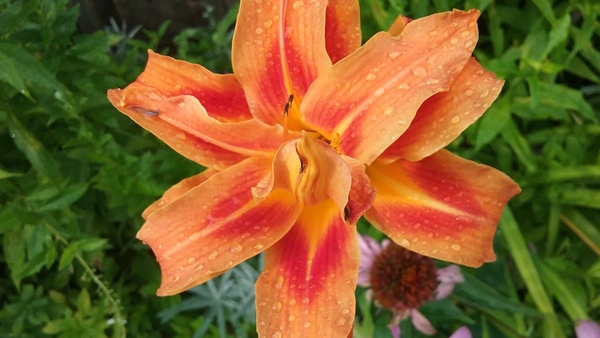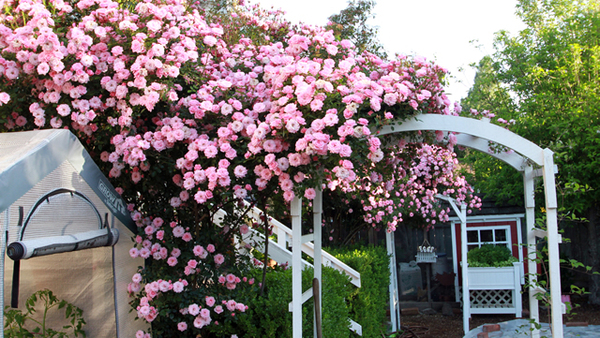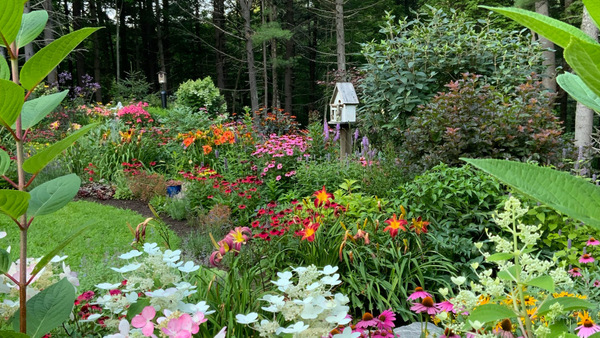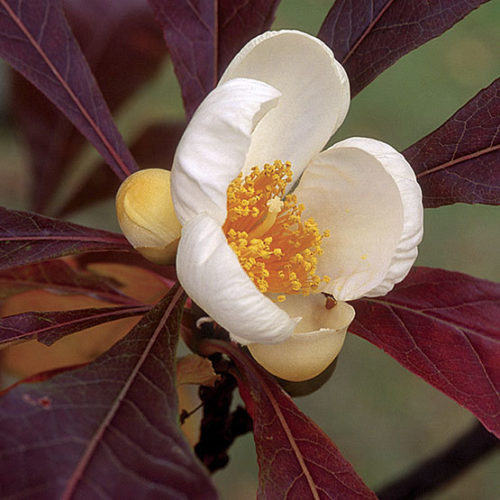
Discovered in the wild along Georgia’s Altamaha River in 1765 by botanists John and William Bartram, this beautiful landscape tree is considered extinct in the wild. The Bartrams named the plant in honor of their friend Benjamin Franklin. All franklin trees today are descended from those propagated by the Bartrams in their Philadelphia garden. It is a deciduous, understory tree with an upright habit. It can be grown as a single-trunked tree or a multistemmed shrub. The fragrant white flowers have bushy yellow stamens, and the leaves are dark green and glossy, turning orange, red, and purple in the fall. It blooms in late summer and early autumn, when few other trees are in flower. The fruit that follows is woody and spherical. Franklin tree makes a great addition to an open area of a woodland garden.
Noteworthy CharacteristicsGlossy foliage and good fall color. Beautiful, camellia-like flowers that are fragrant and bloom late in the season. Native.
CareGrow in organically rich, moist but very well-drained soil of acidic to neutral pH, in full sun. Resents transplanting and should not be disturbed in the landscape.
PropagationSow seed as soon as ripe at 50° to 64°F. Root softwood cuttings in summer using bottom heat.
ProblemsWilt and root rot can be serious problems, and Japanese beetles may eat the flowers.
- Genus : Franklinia
- Plant Height : 10 to 15 feet
- Plant Width : 10 to 15 feet
- Zones : 6, 7, 8, 9
- Bloom Time : Fall, Late Summer, Summer
- Characteristics : Fragrant Flowers, Showy Fall Foliage, Showy Foliage
- Light : Full Sun
- Moisture : Medium Moisture
- Maintenance : Moderate
- Growth Rate : Moderate
- Plant Type : Shrubs
- Plant Seasonal Interest : Summer Interest
- Flower Color : White, Yellow






